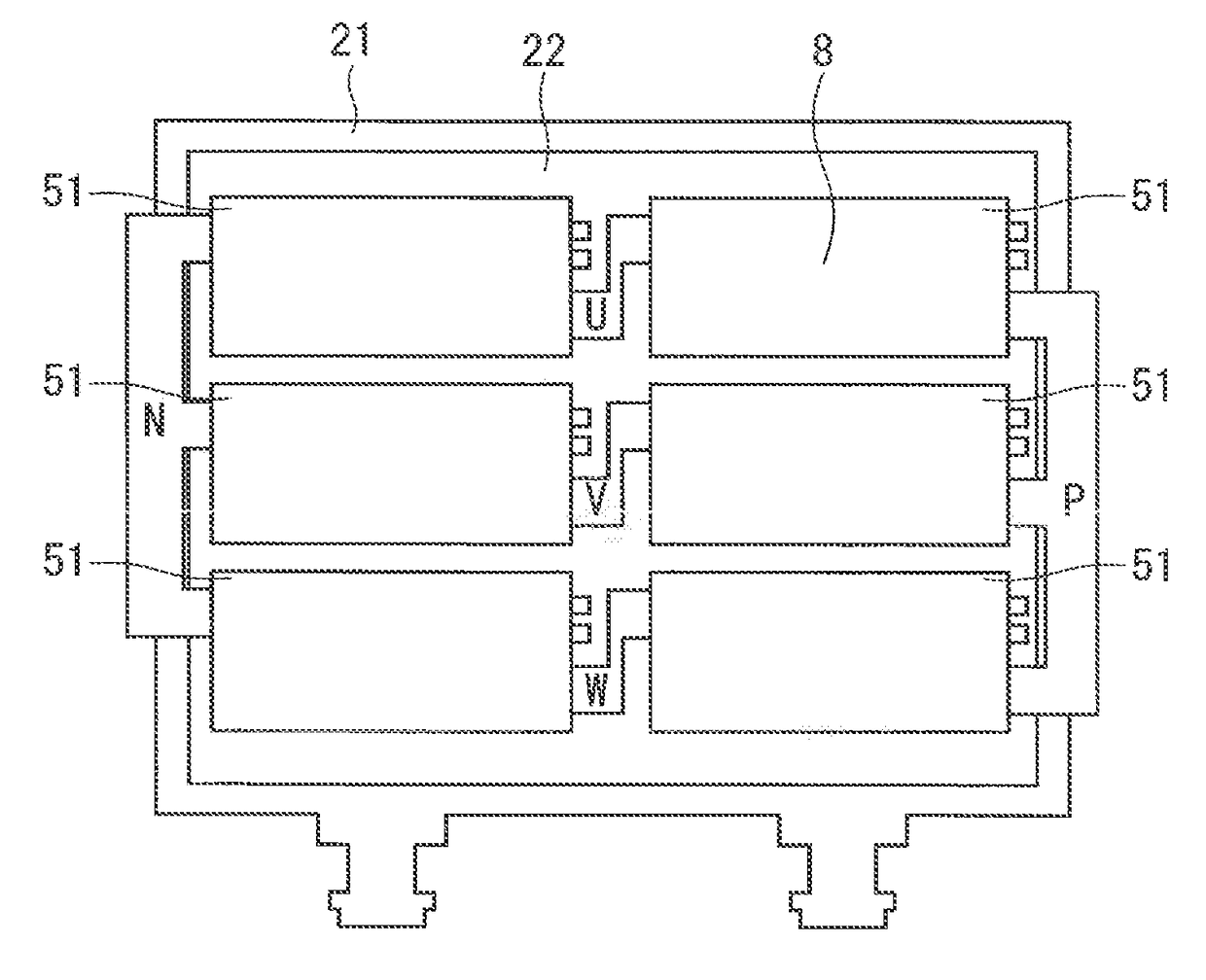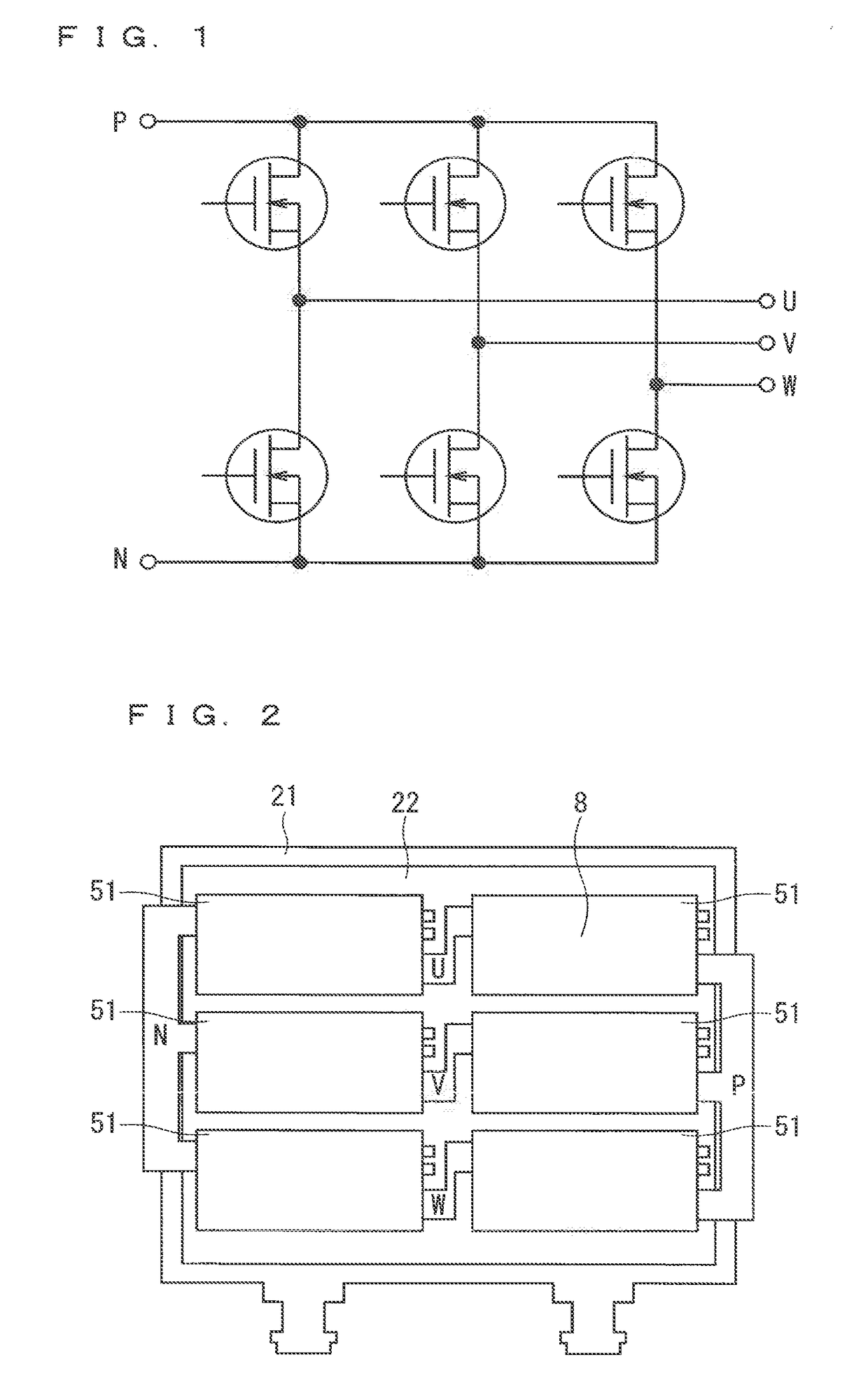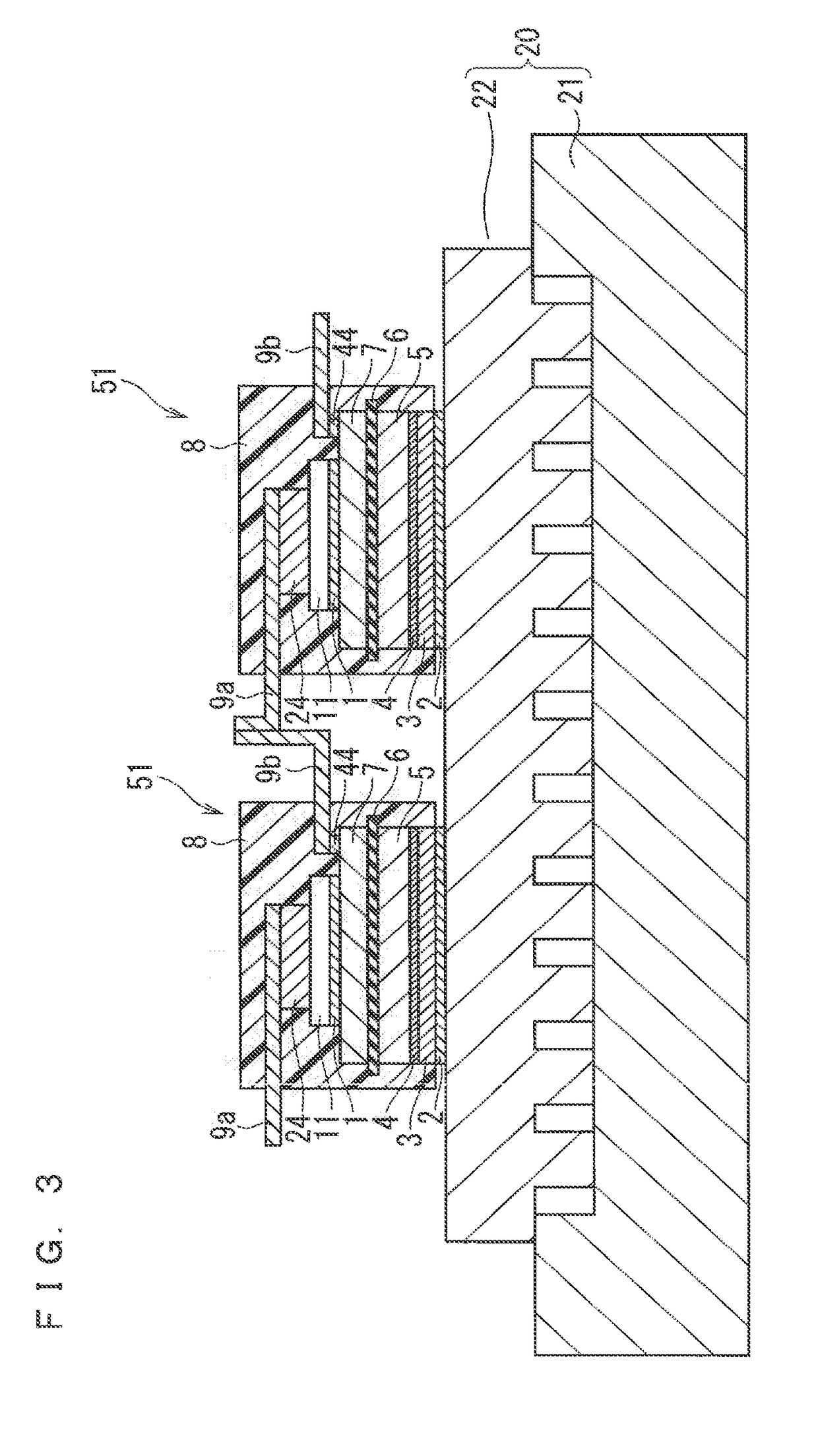Semiconductor device and method for manufacturing semiconductor device
a semiconductor and semiconductor technology, applied in the direction of printed circuit manufacturing, printed circuit aspects, printed element electric connection formation, etc., can solve the problem that the heat dissipation properties cannot be maintained for a required lifetime, and achieve satisfactory heat dissipation properties and reduce metal fatigue of the bonding member
- Summary
- Abstract
- Description
- Claims
- Application Information
AI Technical Summary
Benefits of technology
Problems solved by technology
Method used
Image
Examples
first embodiment
Configuration
[0047]Below, in portions where symbols of elements or names of materials such as copper (Cu) or aluminum (Al) are described without specific statements, elements or materials including other additives such as a copper alloy or an aluminum alloy, for example, shall be included.
[0048]FIG. 1 is a circuit diagram of a power module for a three-phase inverter using a MOSFET as one example of a semiconductor device regarding the present embodiment. Also, FIG. 2 is a top view of the power module regarding the present embodiment in a case where the power module is formed of one-in-one submodules (one arm is provided per submodule). In this regard, while an arm is a unit corresponding to one MOSFET serving as a semiconductor element in a case illustratively shown in FIG. 1, an arm corresponds to a plurality of MOSFETs in a case where a plurality of MOSFETs are connected in parallel to serve as switching elements, for example. Also, in a case of an IGBT, for example, an arm corres...
second embodiment
Manufacturing Method
[0092]Next, as a second example of a manufacturing method, a manufacturing method for a case where the bonding member 2 is a Cu-Sn alloy obtained by liquid phase diffusion bonding and the laminated plate member 33 is bonded to the cooler 20, will be described with reference to FIG. 18 through FIG. 22.
[0093]As illustratively shown in FIG. 18, a so-called die-bonding step in which the semiconductor chip 11 is bonded to the insulating substrate 13 is performed. The bonding member 1 is prepared such that a melting point or a solidus thereof is higher than the highest temperature reached by the bonding member 1 in a soldering step in which soldering is performed, in order to prevent the bonding member 1 from melting when being soldered in a later step. This requirement is satisfied by a so-called Ag sintering process using a silver nanoparticle, the above-described liquid phase diffusion process, or high melting-point solder, for example. Among those processes, an Ag ...
third embodiment
[0100]Next, as a third example of a manufacturing method, description will be made about a case where the bonding member 4 is formed of the same material as the bonding member 2. A method for manufacturing the submodule 51 is similar to the example of manufacturing method described in the second embodiment.
[0101]The bonding member 2, the laminated plate member 33, and the bonding member 4 are placed in the stated order from the top, between the submodule 51 and the cooler 20, and those members are simultaneously bonded using a reflow furnace or the like. While a completed configuration is similar to the configuration illustratively shown in FIG. 22, the bonding member 2 and the bonding member 4 are formed of the same material and thus need not be dealt with as distinguished from each other.
[0102]In the case of the third embodiment, a bonding step using the bonding member 4 can be omitted as compared to the manufacturing method described in the first embodiment and the manufacturing ...
PUM
 Login to View More
Login to View More Abstract
Description
Claims
Application Information
 Login to View More
Login to View More - R&D
- Intellectual Property
- Life Sciences
- Materials
- Tech Scout
- Unparalleled Data Quality
- Higher Quality Content
- 60% Fewer Hallucinations
Browse by: Latest US Patents, China's latest patents, Technical Efficacy Thesaurus, Application Domain, Technology Topic, Popular Technical Reports.
© 2025 PatSnap. All rights reserved.Legal|Privacy policy|Modern Slavery Act Transparency Statement|Sitemap|About US| Contact US: help@patsnap.com



